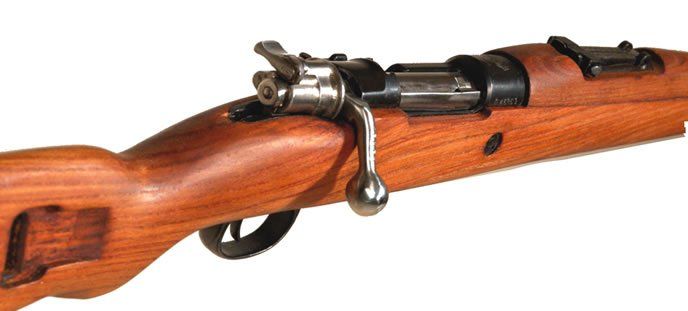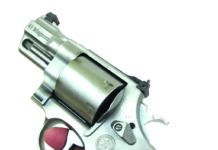Re “Special Reports,” February 2015
I was extremely pleased when my issue arrived and on the cover was the comparison of the three new striker offerings I had asked about. All three are quality, but I am extremely happy to have purchased your consensus winner, the VP9. I don’t know if you had the options I did. The VP9 choices for me were the three-dot white sights with the photo-luminescent paint that can be charged with a decent high-power flashlight and gain a few minutes of pretty bright night sights, along with two magazines. My FFL put a $560 price on this one. The option I choose was the LE version that came with Meprolight Tru-Dot night sights and three HK magazines for $614. The prices do not reflect the $30 transfer fee mandated by the state of Delaware. So, throw in the background check and my tip to him, and it came out to just about $670 completed. On Meprolite’s IDF holster site, the sights were $139, and the mag I have seen for as much as $50 to $70. I feel very good about this purchase.
When I was checking it out, I was also told by SIG that night sights were included, and the trigger-safety toggle could be ordered if desired. After shooting my Glock G23C for more than 12 years, the HK toggle felt smooth and unobtrusive. I would also like to add that the Tru-Dot night sights were the brightest that I have ever encountered. I have a set of Mepros on my Kimber, and they are smaller and dimmer. The thing you mentioned about the Walther on the negative side, like the non-dovetailed sight, I had completely missed. You also mentioned your VP came with some grease on it, but mine needed a through cleaning because it was heavily greased. Great and informative article on three good striker-fired 9mms. In my mind, there is no doubt the HK VP9 was the most easily configured handgun, with superior ergonomics for many different hand sizes. A very thorough and precise article. Great job.
— John Lofland
Re Slide-Retraction Effort
I am a pleased subscriber of Gun Tests of some years, and will continue to be. Age has brought on some infirmities, one of which is a definite loss of hand strength. Surgeries on both wrists have no doubt contributed. I could swear that I read some time during 2014 that the force necessary to retract the slide on any semi-auto handgun that you tested would henceforth be measured and included in your data. If I am mistaken, I would sincerely encourage that this be measured and listed in the future. Women, old people, and others with a strength impediment will appreciate the information. You listing the trigger span and grip circumference is invaluable and really appreciated. This is seldom, if ever, shown in other publications’ tests. Keep up the good work.
— Alan Witter
Hey Alan: I did say we were considering adding it to the template. I’m pretty convinced we should, but now I’m struggling with how to gauge it and supply the necessary instrumentation to all the writers who review pistols.
— Todd Woodard

Re “Mitchell’s Mauser Special Report,” March 2015
I bought one of these pristine rifles about 20 years ago at Big Five in Victorville, California. On inspection, I noticed much Cosmoline detritus extant, including on the bolt. I disassembled it and immersed all the metal parts in boiling water for about a half hour, just as we did in the Army with M1 Garands in the early 1960s when I served. After drying and washing with it alcohol, I reassembled this beauty. I too tried some pre-1940s ammo, and it worked fine. I had groups smaller than 2 inches at 200 meters. Now, I only use cartridges I make myself out of 30-06 cases that I resize and seat some 198-grain FMJ nickel-plated bullets I got from Ecuador. I prefer certain powders, such as 4985 and 2460. I can still hit silhouettes at 600 yards with my 77-year-old eyes and no scope. Again, thanks for the fine article on the Mitchell Mauser.
— Jim Lehmann
In the March issue, I neglected to include the Range Data table for the Mitchell Mauser. It appears below. — tw
Enjoyed the report on the M-48 Mauser, but one comment in page 24 is not accurate, as far as I know. The comment about the Canadian 8mm ammo, “It was mighty hot stuff, made in Canada and intended for the Bay of Pigs (never got there), …” is not right. The 2506 Assault Brigade of Cuban Exiles was entirely equipped with WWII U.S. weapons, M1 Garands, BARs, Thompsons, M3s, and so on. Thus, the rifles fired 30-06 ammo. One ship, the Houston, was hit, beached, and eventually burned at the entrance of the bay, and carried 12,000 Garands. Thus, there was no need for any Mauser ammo at the site of the battle, and the brigade only had one day’s supply of ammo when it landed. By the way, the rest of the brigade ammo was lost when the ships Hudson and Rio Escondido were sunk, thanks to the fact that the air support was denied, other ships approaching the landing sites were damaged and could never get to the landing beaches and had to retreat to open waters. The only Mausers used by the brigade were during training in their Central American bases in Guatemala and Nicaragua. The Castro forces had some WWII German 98K Mausers, given by the Soviet Union, by way of Czechoslovakia, before the Revolution or after that, but these were mainly used in guard duty by the militia units in factories and other government facilities, and as far as I know, none were used at the Bay of Pigs. Castro’s forces were mainly equipped with FALs, Garands, Springfields, CZ Model 52s, MG 58s, and other Soviet weapons from WWII, thus they used 7.62×51 NATO, 30-06, 7.62×45, and 7.62x54R.
The only Canadian ammo used by Cuban Exiles was later supplied by the CIA for special operation teams that used the Browning HP. This excellent ammo for these pistols was procured in Canada from CIL industries and was originally intended to be used by the Canadian Armed Forces in their 9mm weapons. As far as I know, none of the Bay of Pigs Exiles had any HP’s in 1961.
— Jose Tepedino
Thanks for your historic information. — Ray Ordorica
I just read your test of the Mitchell Yugo M-48. I’m proud to say there are two of these rifles in my household. These are fine rifles, accurate, reliable and with that “Mauser” mystique. Both have matching serial numbers on the bolt, receiver, and stock; and they also have the Yugoslavian Crest on the receiver. Both were produced in 1953. There were a couple of points that need to be made as part of the commentary:
The M-48 was made from 1950 until 1964/65. There were four renditions, excluding hunting-style exports:
– M-48: whose parts are all machined.
– M-48 A: whose parts are all machined, with the exception of a stamped floor plate.
– M-48 B: whose parts are mostly machined; with a stamped trigger guard, magazine floor plate, and barrel bands. The “B” models had the stamp “M-48A” on the receiver. I’m almost positive your gun was an M-48B.
– M-48 BO: which except for serial numbers, have no identifying markings. These share the same parts stamped as in the B model.
The stocks were not made from teak. The Yugoslavians used beech and ash, though they did make some with walnut stocks, even though walnut was in short supply. However, the Yugo factory sold these rifles all over the world; and in many cases just the metal parts, with the receiving country providing the stocks. I did read that there was an African country that ordered just the metal fittings, and in that country they used teak for their stocks.
I’ve always admired the Mauser 98, but I would not buy a German-built one because many were made with slave labor. In contrast, the M-48 was made in Yugoslavia on German machinery.
— A. Lovitz
Thank you for the information. I still wonder what this wood is, though it greatly resembles teak. It is not beech and does not much resemble a block of ash I have here. It looks like walnut, but the seller claimed it was teak. By the way, most teak has the same density as walnut. African teak is about twice that density, and some of it does not even float. — Ray Ordorica
Status of Remington Trigger Settlement
I saw several months ago that Remington had resolved a law suit by agreeing to replace the triggers on Model 700s. Do you know anything about this and how they are administering this replacement? I have had numerous Remington 700s over the past 40 years and have had three discharges, which I assumed were my fault until reading the article. In all cases, good gun handling made the discharges nothing more than repairing a hole in my deer blind and washing the embarrassment off my face.
— William Helms
Mr. Helms: We sent you a link to a statement by the plaintiff’s attorney (Lanier Law Firm) who handled the Model 700 suit against Remington. Here’s the text of a December 5, 2014, statement by the Lanier Law Firm, which corrected several factual errors made by CNBC about the trigger settlement:
“…[P]apers were filed seeking approval of a proposed settlement of two economic class-action lawsuits of certain Remington bolt-action centerfire firearms that contain either a Walker trigger mechanism, or a trigger mechanism which utilizes a ‘trigger connector.'”
“The filings triggered multiple news reports that mistakenly conveyed the proposed agreement in significant fashions that require immediate clarification.
“These settlements are not recalls.
“These settlements are not any admission that the products are defective or unsafe.
“These settlements are an opportunity for any concerned consumers who have the Remington Model 700, Seven, Sportsman 78, 673, 710, 715, 770, 600, 660, XP-100, 721, 722 and 725 rifles with either a Walker trigger mechanism, or a trigger mechanism which utilizes a “trigger connector” to have Remington install a new trigger.
“The benefits under the settlement, including the trigger replacement program, will not be in place until after court approval of the settlement and full notice will go out at that time.
“This culminates from extensive mediator-supervised negotiations between lawyers for those concerned about the triggers and Remington, who while denying there is any cause for concern, always desires to ensure that its customers are satisfied with Remington products.
“A joint press release will be issued to better explain details of the proposed settlement.”
On Feb. 26, 2015, I emailed J.D. Cargill, Lanier’s director of marketing and communications for the Houston office, who replied, “Unfortunately, I don’t know a whole lot on this yet, but I understand the settlement has stalled… but they’re working on it. Sorry for not being much help.” — tw




























